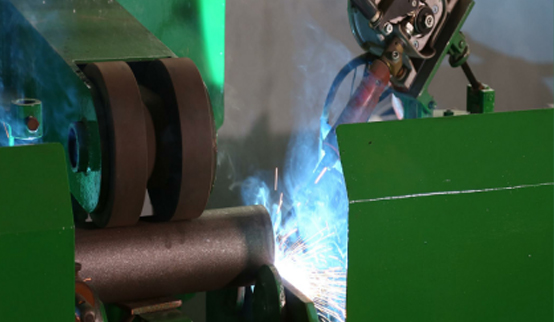 Afrikaans
Afrikaans  Albanian
Albanian  Amharic
Amharic  Arabic
Arabic  Armenian
Armenian  Azerbaijani
Azerbaijani  Basque
Basque  Belarusian
Belarusian  Bengali
Bengali  Bosnian
Bosnian  Bulgarian
Bulgarian  Catalan
Catalan  Cebuano
Cebuano  Corsican
Corsican  Croatian
Croatian  Czech
Czech  Danish
Danish  Dutch
Dutch  English
English  Esperanto
Esperanto  Estonian
Estonian  Finnish
Finnish  French
French  Frisian
Frisian  Galician
Galician  Georgian
Georgian  German
German  Greek
Greek  Gujarati
Gujarati  Haitian Creole
Haitian Creole  hausa
hausa  hawaiian
hawaiian  Hebrew
Hebrew  Hindi
Hindi  Miao
Miao  Hungarian
Hungarian  Icelandic
Icelandic  igbo
igbo  Indonesian
Indonesian  irish
irish  Italian
Italian  Japanese
Japanese  Javanese
Javanese  Kannada
Kannada  kazakh
kazakh  Khmer
Khmer  Rwandese
Rwandese  Korean
Korean  Kurdish
Kurdish  Kyrgyz
Kyrgyz  Lao
Lao  Latin
Latin  Latvian
Latvian  Lithuanian
Lithuanian  Luxembourgish
Luxembourgish  Macedonian
Macedonian  Malgashi
Malgashi  Malay
Malay  Malayalam
Malayalam  Maltese
Maltese  Maori
Maori  Marathi
Marathi  Mongolian
Mongolian  Myanmar
Myanmar  Nepali
Nepali  Norwegian
Norwegian  Norwegian
Norwegian  Occitan
Occitan  Pashto
Pashto  Persian
Persian  Polish
Polish  Portuguese
Portuguese  Punjabi
Punjabi  Romanian
Romanian  Russian
Russian  Samoan
Samoan  Scottish Gaelic
Scottish Gaelic  Serbian
Serbian  Sesotho
Sesotho  Shona
Shona  Sindhi
Sindhi  Sinhala
Sinhala  Slovak
Slovak  Slovenian
Slovenian  Somali
Somali  Spanish
Spanish  Sundanese
Sundanese  Swahili
Swahili  Swedish
Swedish  Tagalog
Tagalog  Tajik
Tajik  Tamil
Tamil  Tatar
Tatar  Telugu
Telugu  Thai
Thai  Turkish
Turkish  Turkmen
Turkmen  Ukrainian
Ukrainian  Urdu
Urdu  Uighur
Uighur  Uzbek
Uzbek  Vietnamese
Vietnamese  Welsh
Welsh  Bantu
Bantu  Yiddish
Yiddish  Yoruba
Yoruba  Zulu
Zulu Optimizing Performance with Return Idler Roller Solutions for Conveyor Systems
Understanding the Role of Idler Rollers in Conveyor Systems
Idler rollers play a crucial role in the efficiency and functionality of conveyor systems, serving as essential components in various industries, from mining to manufacturing and distribution. These rollers are designed to support the weight of the conveyor belt and its load, ensuring smooth transport and minimizing wear and tear on both the belt and the machinery. This article delves into the importance of idler rollers, their types, and how to maintain them for optimal performance.
At the heart of a conveyor system, idler rollers are pivotal in maintaining continuous operation. They help guide the belt, reduce friction, and provide an even surface for loads to travel. Typically made of durable materials like steel or plastic, these rollers are engineered to handle harsh operational conditions, including abrasive materials, heavy loads, and extreme temperatures.
There are several types of idler rollers, each designed for specific applications. For instance, return idler rollers are positioned on the return side of the conveyor belt. Their primary function is to support the empty belt as it returns to the loading point, preventing sagging and ensuring that the belt maintains its shape and alignment. Other types include troughing idlers, which are used to transport bulk materials by shaping the belt into a 'V' configuration, and impact idlers, which cushion the belt during loading operations.
return idler roller

Proper maintenance of idler rollers is essential to ensure the longevity of the conveyor system. Regular inspections can help identify issues such as misalignment, wear, or damage to the rollers. If an idler roller becomes worn out or fails, it can lead to increased friction and heat generation. This not only causes unnecessary wear on the belt but can also lead to system breakdowns, resulting in costly downtime.
Lubrication is also a key aspect of idler roller maintenance. Ensuring that the rollers are properly lubricated helps reduce friction and prevents premature wear. Depending on the working environment, it is advisable to clean and re-lubricate the rollers at regular intervals, particularly in dusty or wet conditions.
Another important consideration is the selection of idler rollers that are appropriate for the specific application. Factors such as load capacity, material type, and environmental conditions should all be taken into account when choosing rollers.
In conclusion, return idler rollers are vital to the effective operation of conveyor systems. By understanding their role, types, and maintenance requirements, industries can enhance the efficiency and reliability of their material handling processes. Investing time and resources into proper idler roller management will ultimately lead to smoother operations and reduced operational costs, making it a critical consideration for any business relying on conveyor technology.
-
Revolutionizing Conveyor Reliability with Advanced Rubber Lagging PulleysNewsJul.22,2025
-
Powering Precision and Durability with Expert Manufacturers of Conveyor ComponentsNewsJul.22,2025
-
Optimizing Conveyor Systems with Advanced Conveyor AccessoriesNewsJul.22,2025
-
Maximize Conveyor Efficiency with Quality Conveyor Idler PulleysNewsJul.22,2025
-
Future-Proof Your Conveyor System with High-Performance Polyurethane RollerNewsJul.22,2025
-
Driving Efficiency Forward with Quality Idlers and RollersNewsJul.22,2025





























